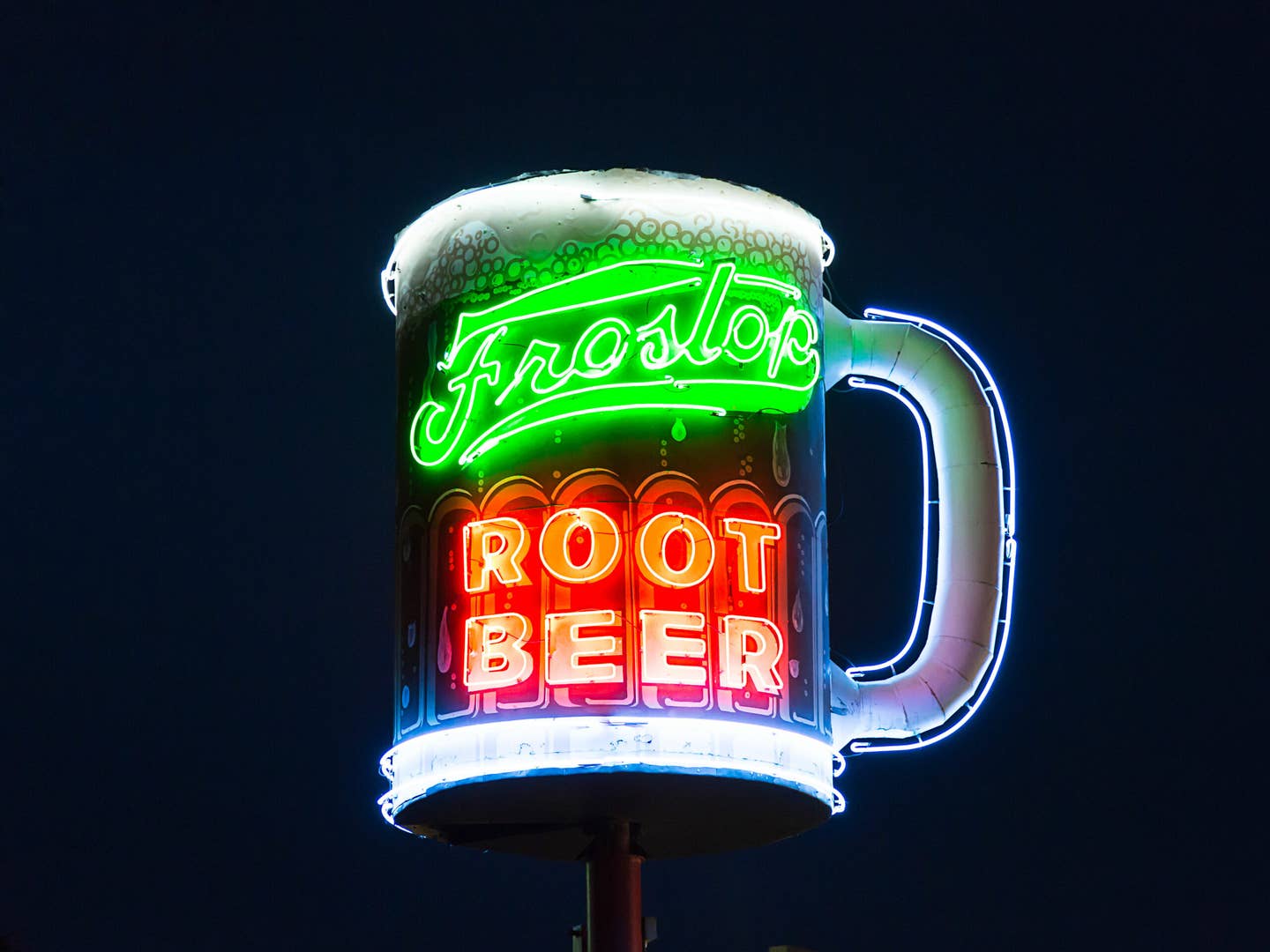
When city dwellers step out for a night on the town, they need something to guide their way through the sea of cosmopolitan darkness. Backlight signs are often garish, and LED far too reminiscent of an overgrown Lite Brite. Neon, though? Somehow the granddaddy of them all has remained prominent and alluring in New Orleans for almost a century, beckoning with its glowing, livewire siren song.
Chalk it up to the city’s artistic spirit or stubborn resistance to change, but neon in New Orleans remains a larger-than-life force here. The sign style rose to prominence in the late 1940s, when the energetic glow quickly became associated with post-war modernity and the cresting tidal wave of Cold War capitalism. From the beginning, neon boldly strode into the evening hand-in-hand with just about every different type of escapist establishment New Orleans could muster.
Neon ensured bars and restaurants in New Orleans were dressed to impress and ready to provide a reprieve from the bustle of the outside world for which the city is renowned. Are you a business man looking for a couple of martinis, secretive curtained booths, and a hunk of steak? Follow the giant neon ribeye—pulsing warm in the night sky—to Crescent City Steakhouse. In search of something more playful? Neon proves itself out-and-out cartoonish at Café 615/Da Wabbit, a diner located on New Orleans' West Bank featuring a looming, Roger Rabbit-style character outlined in buzzy blue. The city's smorgasbord of bars use neon to convey an interior ripe with drippy, scripted elegance or rough-hewn, devil-may-care brashness.
Neon quickly became the Robert Downey, Jr. of New Orleans’ culinary architecture—a little bit mischievous but plenty easy on the eyes. Much like the city itself, neon pushes and pulls between grit and glamour in a looping, never-ending cycle.
While a dismal number of signs were lost during Hurricane Katrina, neon’s first-wave demise took place largely between the 1970s and 1990s, when businesses shifted away from what seemed at the time to be an “antiquated” form of branding.
"I started collecting neon in the 1970s. When you saw neon coming off of a building, you knew that they were going to just put it in the trash. I had them give it to me instead, and I've collected over 3,000 pieces over the years," said Jerry Therio, owner of New Orleans Neon. "One of my oldest restaurant signs is from the 1940s, but I had to fight a claw machine to get it. It was a restaurant where you could go in and get tiger steak, bear steak, elk—before anyone else was doing it. The oldest pieces I have are around 70 years old and they still work."
If embarking on a more modern neon-centric tour of New Orleans, one easily missed, well-preserved hub is in the next parish over in Metairie, where flickering signs pop and hiss between newly constructed Taco Bells and strip mall nail salons on Veterans Boulevard. There's the 24-hour Sweet Things & Grill, decked out in pink neon and open all night for cheese fry cravings and slices of pie à la mode. The nearby Lamp Lighter Lounge's sign—scripted in azure and sailing into the air like skywriting—might not be the oldest around, but speaks to the genuine beauty and power of neon's allure. It's in these dark stretches of seemingly fungible terrain where neon feels the most enviably straightforward: Just keep glowing and you'll be okay.
Of course, the densest and most recognizable clustering of neon is stacked up and down the sticky sidewalks of Bourbon Street. "Sometime in the late twentieth century, neon became evocative of the raffish grit and authenticity of urban America, particularly old Eastern and Southern inner cities, in their pre-decline heyday of the 1920s to early 1960s," said Dr. Richard Campanella, author of Bourbon Street: A History. "Places like Bourbon Street…kept neon alive because it succeeded in putting their patrons in the mind of stylish nocturnal escapism, the same theme struck by the photos, art, and movies using neon as a backdrop." Campanella notes that the Vieux Carré Commission (which oversees regulations for Bourbon Street) encourages the use of neon for commercial facades on Bourbon Street.
New Orleans is a town where people come to reinvent themselves, to bury their old identity, and to rise up from the ash as a completely new, electrified person. Even in the age of social media, I can’t count the number of acquaintances I know who have uprooted their lives for an entirely fresh identity in the city, whether as a swanky restaurateur or New Age drum circle leader. It is a final American bastion of escape. Even if you’re not ready for or interested in a complete persona overhaul, neon in New Orleans beckons people to be anything they want just for an evening. Just follow the light, then bend and buzz and turn in all the right ways.
Ready to follow the light? Here are the best places to find neon in New Orleans:
The Sandpiper Lounge
2119 Louisiana Avenue
New Orleans, Louisiana
(504) 895-2204
Dawabbit
615 Kepler Street
Gretna, Louisiana
(504) 365-1225
The Lamp Lighter Lounge
908 Veterans Memorial Boulevard
Metairie, Louisiana
(504) 832-9909
Saturn Bar
3067 St. Claude Avenue
New Orleans, Louisiana
(504) 949-7532
Crescent City Steaks
1001 North Broad Street
New Orleans, Louisiana
(504) 821-3271
Angelo Brocato Gelateria & Pasticceria
214 North Carrollton Avenue
New Orleans, Louisiana
(504) 486-0078
Ted's Frostop
3100 Calhoun Street
New Orleans, Louisiana
(504) 861-3615
Half Moon Bar & Grill
1125 St. Mary Street
New Orleans, Louisiana
(504) 593-0011
Keep Reading
Continue to Next Story










